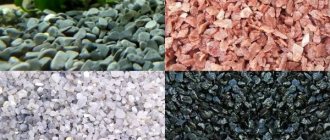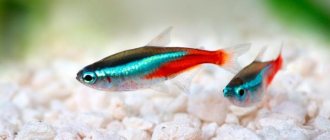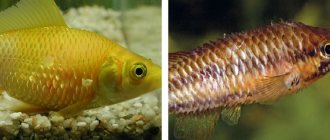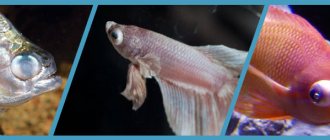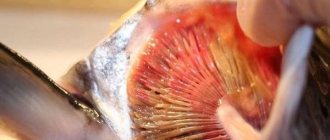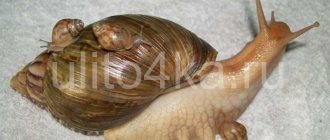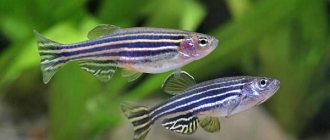Every aquarist has faced a problem such as the health of their pets. Yes, yes, fish also get sick, because they are also living beings, just like you and me. If a person leads a healthy lifestyle, plays sports, eats right, and does not poison his body with chemicals (smoking, drug use), then he gets sick less or not at all. It’s the same with fish, if your aquarium has a good habitat, then the fish won’t get sick. From this we can conclude that most of your pets’ diseases are caused by improper biological balance in the aquarium.
The main diseases of fish, including the Pink Zebrafish, are Ichthyophthyriasis, Plistophoriosis, Trichonidiasis, and Bug-eye. Although this fish is very hardy, it can also get sick, like all other aquarium fish.
Main diseases and their treatment
First of all, it is worth explaining that the reason for all zebrafish diseases are three factors:
- pathogens;
- parasites;
- non-compliance with conditions of detention.
In most cases, diseases can be easily gotten rid of if you create suitable conditions or treat the fish.
Bug-eyed
Bug eyes are one of the most common ailments that affect Danio.
As a rule, it occurs due to poor water quality (a lot of pollution or the level of nitrates and phosphates is exceeded). Sometimes the first symptom is a slight enlargement of the abdomen, which can be mistaken for the female being pregnant or confused with signs of another disease. After some time, a symptom appears that speaks for itself: the eyes of the fish bulge, as if they are filled with a whitish liquid from the inside.
If measures are not taken, the eyes will eventually fall out, in addition, serious disorders will also occur in the fish’s body, which will cause death. Thus, at the first suspicion of bulging eyes, you should check the quality of the water, which most likely will not correspond to the norm. Every 2 days you need to carry out a partial water change, carefully monitoring the condition of the fish. If everything goes correctly, the swelling of the eye will gradually resolve.
Obesity
Oddly enough, banal obesity has a very strong effect on Danio’s health. First of all, she becomes lethargic and inactive, and her resistance to infections decreases sharply. With significant obesity, metabolism is disrupted, the kidneys and liver are affected, which subsequently leads to death.
To prevent obesity, you should pay close attention to the nutrition of your fish: give not only dry food, but also fatty food, provide a variety of food, and, of course, do not allow them to overeat.
Bloating
Danios are prone to bloating, which can be confused with overeating or caviar. Associated symptoms are inactivity, living on the bottom, lack of contact with other individuals. The belly can become bloated for a variety of reasons, but the most common culprit is infectious bacteria.
To treat a sick fish, you need to use metronidazole (1 tablet per 30 liters of water). After a week the illness should go away. The convenience of this drug is that the sick individual does not have to be placed in another container - prevention will not hurt healthy fish.
Trichodinosis
Trichodinosis is an infection caused by Trichodina ciliates.
The disease develops due to poor disinfection of objects that enter the aquarium. When the disease occurs, Danio begins to rub against the walls, a dirty coating is noticeable on its body, and the scales themselves become pale. To get rid of the infection, it is necessary to raise the water temperature to 30 degrees, which will negatively affect the ciliates. A sick individual must be quarantined: placed in a separate small container. (For short-term treatment, even a regular jar will do, but it will be better if you have a spare aquarium equipped with a filter, heater and lamp). Fish with trichodinosis are treated with trypaflavin, and also given baths of table salt.
Growths
Sometimes strange growths appear on the body of the fish. Most often they appear as opaque white lumps that can form clusters. In most cases, growths are formed due to the activity of a fungus. Aquarium zebrafish are resistant to this infectious disease, but this still happens sometimes. In such a situation, it is necessary to quarantine the fish and periodically carry out salt baths at a temperature of 28 degrees. The growths should soon disappear.
Tuberculosis
An extremely dangerous infectious disease that can only be cured in the early stages. The causative agent of tuberculosis is a bacterium from the genus Mycobacterium.
Some species of this bacterium cause tuberculosis in humans, but completely different species infect fish. However, it is worth wearing gloves when treating zebrafish, especially if there are cuts or other damage to the skin on your hands.
The pathogen enters the aquarium with algae, decorations, soil or other affected individuals. Symptoms of tuberculosis include immobility, lack of appetite and loss of scales.
If tuberculosis is suspected, the fish should be placed in another container and treated with kanimycin. This product is mixed with food in equal proportions (for example, 10 g of the drug per 10 g of food).
Tuberculosis affects any zebrafish, regardless of the species, it does not matter whether it is Pink Danio or Glofish.
By the way, we recommend reading an interesting article about Danio varieties, which discusses the most popular fish of this family.
Alkalosis
Peptic ulcer disease is a very rare disease for zebrafish, but still common to them.
Another name for this disorder is alkaline disease. You can easily guess that it occurs when the acid-base balance of water in the aquarium is incorrect. Danios are very sensitive to pH, and when it changes for the worse, they become restless, try to jump out of the water, and often itch against the bottom or walls.
To eliminate alkalosis, you should gradually replace the water with a more suitable one, or purchase a pH filter that can regulate acidity.
Feeding
The diet of wild zebrafish consists of small insects and their larvae. When kept at home, they eat ready-made commercial food. As a supplement, give bloodworms, daphnia, and brine shrimp.
When purchasing food, pay attention to the manufacturing date and store it in vacuum packaging.
Zebrafish eat from the surface. Remove food that has sunk to the bottom or is floating in the middle layers of the water.
Feed the zebrafish once a day. Overfeeding causes problems with internal organs.
Danio rerio diseases
Danio rerio is a fish from the genus Danio that is famous for being the first domestic animal to undergo genetic modification. Otherwise, in their lifestyle and tendency to certain diseases, they are similar to ordinary Danios.
However, it is especially important to monitor the feeding of your Danio Rerio as they are prone to overeating. As noted above, obesity leads to many problems in the body of fish, while starvation harms them much less.
In addition, Rerio may experience various ailments:
- blurred eyes;
- the appearance of mucus on the gills or a change in their color;
- dullness of the skin;
- the appearance of specks or spots.
If such violations occur, the fish should be quarantined and given short warm baths several times (methylene blue diluted in a small amount of water at 30-32°C).
Habitat in nature
Danio rerio is common in water bodies of Southeast Asia. The largest populations live in India, Pakistan and Bangladesh. In Bhutan and Myanmar, zebrafish are less common. There is evidence of the existence of small populations in rivers and streams of the United States.
Danio rerio can live in both natural and artificial reservoirs: rivers, canals, ponds and streams. This species changes habitats depending on weather conditions. During the rainy season, adults inhabit puddles and rice fields: there they breed and feed. At the end of the season, the zebrafish return to the rivers.
Answers to frequently asked questions
Danio often develops symptoms that are difficult to attribute to one or another disease, but it is necessary to get rid of them in any case.
Why did you become hunchbacked?
Scoliosis often affects these fish, and the causes can be a variety of factors:
- inbreeding of fish leading to gene damage;
- lack of vitamins and minerals in food;
- constant oxygen starvation;
- binge eating;
- a large number of bacteria in the water.
Obviously, the problem mainly arises due to the oversight of the fish owner, who poorly monitors the quality of food, cleanliness of water, and, in general, the maintenance of Danio.
Floats on its side, what should I do?
Abnormal movement of the fish may indicate that they are being poisoned by substances in the water.
Danios are very sensitive to nitrates, so it is necessary to change the water, changing one third or a quarter of the total volume of the aquarium every few days.
Why red gills?
Sometimes red gills are caused by a viral infection, but in most cases, red gills indicate ammonia poisoning.
To verify this, it is necessary to conduct tests and check the composition of the water. You can test the water using test strips, drop testers, or electronic testers that are sold in pet stores. Any test is accompanied by instructions and recommended values, so you can immediately identify deviations from the norm.
If you find an increased level of ammonia, then the water needs to be gradually replaced (10-15% of the volume every day). It is also recommended to use filters or plant plants in the aquarium.
Reproduction
Breeding zebrafish at home is not particularly difficult. They reach puberty at 5–6 months .
The fact that the female is ready to spawn is indicated by an increase in the abdomen near the anus.
Females and males are seated in separate containers, giving them time to prepare for spawning.
For the spawning itself, prepare a clean container (jigging tank) with a volume of 10–15 liters. The bottom is covered with Java moss, pressed down with a small stone.
The height of the water column should not be higher than 8 cm. It is important that the water is not only clean, but also well saturated with oxygen.
Spawning
The fish are transferred to the nursery in the evening, releasing 1 female and 2–3 males. They need the night for adaptation and final preparation. Spawning begins early in the morning.
The mating dance of the rerio is similar to the endless running of the female from the males . Finally, the male catches up with the female and butts her head in the abdomen, stimulating the release of eggs.
The eggs fall to the bottom and the males quickly fertilize them. Then everything repeats itself. This pandemonium lasts about an hour.
As soon as the female has released all the eggs (about 50–100 pieces), the spawning is over and the fish are removed from the spawning tank.
Attention! If the female does not respond to the courtship of males and hides in the moss, it means that she is not yet ready to spawn. Leave it for a few days and repeat the procedure.
Caring for eggs and fry
Progress in egg development depends on water temperature:
- 7–9 days at 16 °C;
- 2–3 days at 25…28 °C.
While the eggs are maturing, keep an eye on the eggs and remove cloudy eggs using a pipette.
The emerging fry hang on the walls of the spawning tank . They remain in this form until the yolk sac dissolves.
Attention! The filter and compressor must be running constantly.
Swimming babies begin to be fed with egg yolk, ciliates or young artemia (nauplii) .
At a comfortable temperature and sufficient feeding, the fry grow to normal length in 2–3 months.
In what cases can it be treated in a community aquarium, and when is it better to remove a sick fish?
It was already noted above that diseases can be infectious or bacterial, and can arise due to improper living conditions. It is logical that in the second case there is no point in removing the sick individual, since it is necessary to correct the situation in the aquarium itself.
If the disease is contagious in origin, then the sick fish should be placed in a separate container with a high concentration of the drug in the water. Treatment in a community aquarium is also ineffective for the reason that in a large volume of liquid it is difficult to achieve the required content of medicinal components.
As for the fish remaining in the common tank, they also need to be treated for preventive purposes, and the aquarium itself must be thoroughly removed and cleaned. All decorative elements and other components should be disinfected, since the causative agent of the disease often remains in the soil or on the surface of plants and other objects.
Description
Danio rerio is an aquarium fish with an elongated, pale yellow body, along which bright blue stripes stretch. Dark stripes alternate with yellowish ones, which makes the fish look like a zebra. Thanks to its elongated body and characteristic stripes, the species received the nickname “ladies' stocking.” The anal and dorsal fins are also decorated with stripes, while the dorsal and pectoral fins remain transparent. The mouth is located quite high: this is explained by the fact that the fish receive food on the surface. In captivity, zebrafish grow up to 3-4 cm, in exceptional cases - up to 6.
Interesting fact: zebrafish is the first fish to have bioluminescent genes “implanted” into its genome. Such “mutants” are distinguished by their bright colors. The color is revealed most fully under ultraviolet radiation. Luminescent fish are a patented species. They are called GloFish and have a varied palette of colors: orange, yellow, green, coral. In some countries they are prohibited for sale and breeding: the safety of genetic modifications is questionable. However, no negative consequences were noticed.
Prevention
It has already been said that Danio is very resistant to various diseases, which explains its popularity among aquarists. However, there are several factors that directly affect the health of this fish:
- artificial air aeration;
- high-quality filtration;
- timely change of water;
- optimal acidity level (6.5-7.5 pH);
- correct and dosed feeding;
- sterilization of all objects in the aquarium (using boiling water or a weak solution of potassium permanganate).
If these conditions are violated, Danio can easily get sick. Some diseases are easy enough to cure, but others will require some work. Sometimes advanced diseases cannot be treated, which leads to the death of the diseased fish. To prevent this from happening, you just need to follow simple recommendations, and then the bright multi-colored schools of Danios will delight your eyes for a long time.
Content
The pink zebrafish is simple to keep - it adapts to new conditions, is not picky about food, and the aquarium setup is suitable for many breeds of fish.
Aquarium
Choose a long, shallow aquarium, 70 cm long and 40–50 cm high. Danios live in schools, for 7–10 individuals a volume of 50 liters is needed, for 20 from 100 liters.
Be sure to have a tight-fitting lid.
Water parameters
Danios love cleanliness and freshness. They are not picky about the chemical composition.
| water temperature | 20–24 |
| rigidity | up to 20 |
| acidity | 6,0–7,0 |
However, temperature fluctuations of 16–26 degrees will not harm the fish. Change water weekly at a rate of 20–30% of the volume.
Plants
For the pink zebrafish, arrange thickets of plants and open areas in the aquarium. Choose plants that create shaded areas:
Priming
Place small pebbles and several large boulders without sharp edges on the bottom. Set up some driftwood.
Equipment
Use filters with centrifugal pumps or circulation pumps to create a flow so that there are areas in the aquarium without water movement.
Aeration is moderate, zebrafish need oxygen, but what gets into the water during changes is quite enough.
Lighting
Zebrafish look most vibrant in daylight. Install lamps near the front glass with a power of 45–69 W. Then the scales of the fish will sparkle with bright colors.
Interesting Facts
- Malabar zebrafish eggs have one peculiarity: they are covered with special mucus and therefore not only fall to the bottom after spawning, but can also stick to algae leaves, aquarium walls and decorative items.
- Malabar danios sometimes mate for life and breed with only one partner.
- Representatives of this genus are surprisingly peaceful creatures. When they quarrel among themselves, they open their fins wider and begin to spin.
- There is a hierarchy in a school of Malabar zebrafish. The central place, as a rule, belongs to the strongest male. Further from the center is the place of weaker individuals. Their body is placed at a greater angle than the body of the leader (it swims almost horizontally).
average price
The cost of fish varies from 60 to 120 rubles. There is no fixed price for zebrafish; in the pet store you can find young specimens for 45 rubles. Beginning aquarists sell young male zebrafish from 35 rubles per individual. Buying a flock of nimble danios is an excellent option for filling an aquarium with aquatic inhabitants, which will cost quite cheap. Many aquarists choose zebrafish for their aquarium due to their unpretentiousness and ease of care, because such fish are easy to breed and maintain.
Do you already have zebrafish in your aquarium? Share in the comments!
Reviews
Small, beautiful fish are loved by many aquarium lovers not only for their appearance, but also for their character.
Introduction
The Malabar zebrafish is the largest known member of the zebrafish genus. Representatives of this species in the wild grow up to 15 cm in length. Despite their impressive size, these creatures are not pugnacious and accommodating. It is not common in home aquariums.
— Advertising —
In Latin, the name of this fish is Devario aerctequipinnatus or Danio aequipinnatus (as it was called in earlier sources).
The Malabar zebrafish species was discovered 165 years ago. In 1849, it was first described by a physician, zoologist and biologist from Britain, Thomas Jerjon. According to some reports, the Malabar zebrafish was discovered 10 years earlier, in 1839.
The homeland of the Malabar zebrafish is considered to be the north of India and Thailand, the reservoirs of Nepal and Bangladesh. Now this species has a wide habitat and is not considered endangered. Danios of this species settle in clean mountain rivers and streams with a quiet flow. Schools of these fish love to swim in the upper layers of water.
As mentioned, the Malabar zebrafish is the largest fish among its relatives. The length of aquarium specimens can be up to 10 cm in length.
— Advertising —
Danio Malabar is a fish with a tall body that is flattened on the sides. The main body color is silver, the back is olive green. Two blue stripes run from head to tail, forming a lacy pattern near the gill covers. The fins on the back and chest are blue, the anal and caudal fins are pink.
Like many members of the genus, in good conditions, Malabar zebrafish live for about 5 years.
Compatibility
Peaceful zebrafish are well compatible with other fish. Due to their high degree of adaptation to any conditions, they become excellent neighbors for inhabitants of other countries, such as titers and rainbows. Get along well:
- neons;
- guppy;
- gourami;
- catfish.
Zebrafish are schooling fish and when kept in numbers less than 8, they experience stress, which is why they become lethargic and inactive. The fish in the group are bright and active. A school of zebrafish in numbers of up to 8–10 individuals exhibits aggressiveness towards neighbors. Increase the population to 12-14 to avoid fights.
Veiled does not get along with barbs.
Not compatible:
- goldfish;
- acne;
- cichlids;
- discus.
How to distinguish a male from a female
Females are distinguished by a convex abdomen. It is also taken into account that males are smaller in size than females, making them look slimmer and more graceful. During the beginning of mating games, separating the female from the male is as easy as shelling pears - the males actively chase each other, cutting circles, and the female remains more calm.
Female and male zebrafish
As for behavioral characteristics, males are always more active than females. These are the basic parameters that allow you to determine the sex of the fish.

